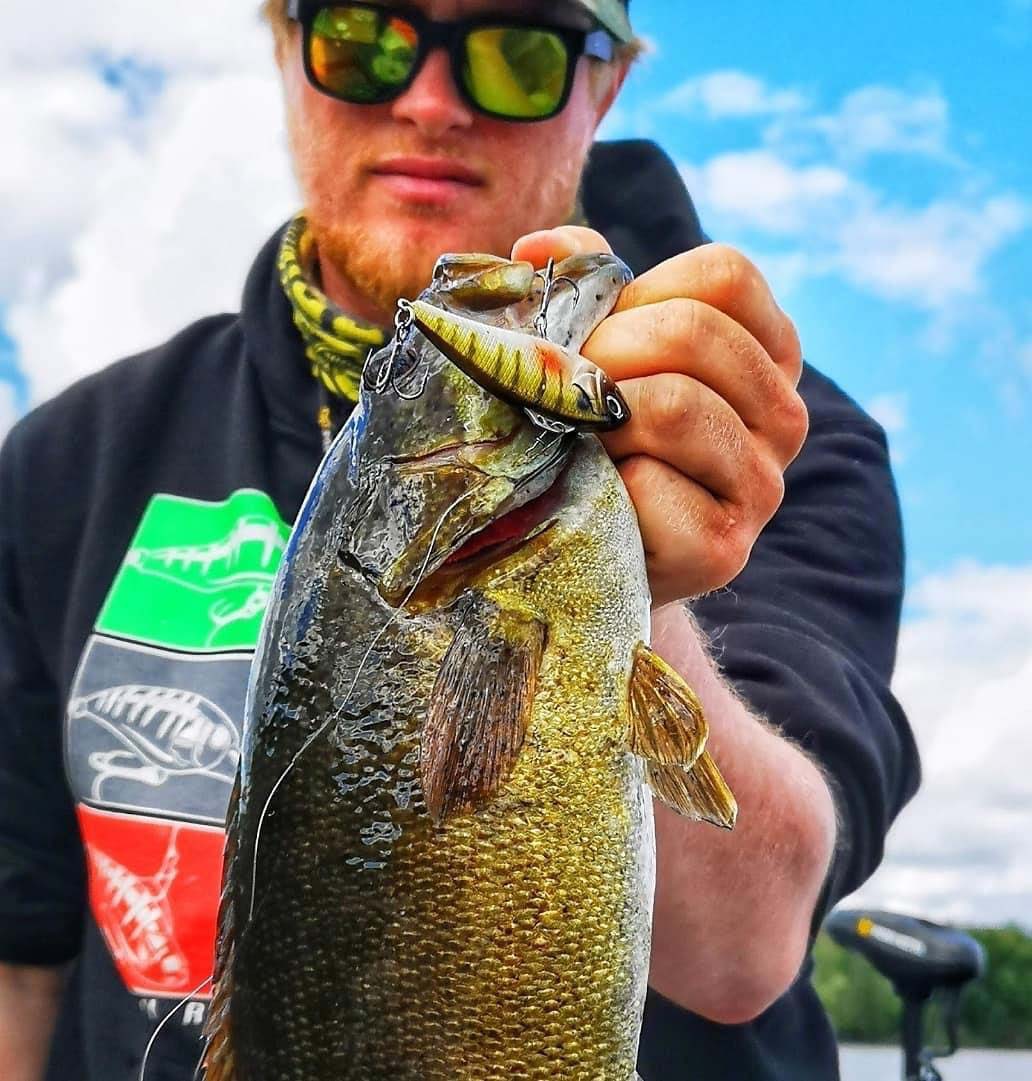
The last of the leaves are falling and priority is chasing bronzebacks until ice sets in.
Some anglers don’t put the boat away until the very end of the season. If you are willing to do the same, you can be rewarded in a few different ways. One, catching the fish of course and two, information. By sticking it out you can get a better understanding of the fish. These fish have slowed down considerably in the last month. Wherever you find them now will most likely remain the same throughout the ice season as well.
As water temps dip below 50, they turn off the feed bag and the bite slows down significantly. So as winter approaches smallies will go deeper and not feed as aggressively. The reason they head deep is to find the most stable temperatures, usually around the 20- to 40-foot range. They love posting up against structures as ambush points. Stonewalls and humps are popular locations to find them. It also becomes a game where the fish seemingly calculate how much energy they expend versus how much forage they may consume.
Basically, they hold tight to where they are and are more likely to take on some slower, more vertical presentations instead of giving chase across an area. This is where lure choices such as blade baits, lipless cranks and jigging spoons can shine the brightest for you. I tend to use the same baits for them now that I do for ice fishing. Growing up it was all about blade baits and Rat-L-Traps for me. Just like everything else in life, things have evolved and been fine tuned.
Nowadays I’m very big on micro finesse presentations. There are tons of options on the market now for this type of fishing. I’ve become accustomed to the world of Eurotackle. Top producers for late fall smallies are the Z-viber, Z-darter and the Livespoon. All of these baits come in various sizes and weights so you can really dial it in. Even if you find the fish, there is still the problem of getting them to bite. Sometimes drop speed and cadence can make all the difference in triggering a strike.
At times some of these fish can be overlooked as they are hugging the bottom so tightly that they might just look like part of the lakes bathymetry. I remember fishing schools of smallies so tightly packed around boulders in an area the size of a car. When a few landed on the boat they still had mud on their bellies because they were literally laying on the bottom of the lake. Which just goes to show you how lethargic they are this time of year which can make for some frustrating fishing. However, as the old saying goes “persistence pays off”.
It isn’t just about working your lure through the water column, or even just keeping it in front of their face. Pounding the bottom and stirring up mud or sediment can get the attention of lazy fish. This activity can mimic other fish feeding which gains the interest of others. Again though, good electronics can definitively aid you in catching fish. Without them, you won’t be able to tell what the fish are doing or how they react to your baits. If you must fish blindly, stick to known structure and test your luck.
I like to use a 6-foot medium-light action rod with a 1500 series spinning reel. Everyone has their own preferences but I’m partial to St. Croix Triumph rods and Shimano reels, Stradic or Sedonas at the very least. Obviously a rod with a split handle increases your level of sensitivity which is important when dealing with sometimes subtle bites. Fish may just kind of poke and check your presentation but not actually commit. Never mind the perch that always seem to find their way into the mix and like to peck and nibble.
My line choice is 6- to 8-pound mono with an 18- to 24-inch length of fluorocarbon leader. Some anglers use straight fluoro but it has a lot of memory and gets squirrely coming off the spool when it’s cold. Ultimately the main reason for the leader is for transparency. Fluoro is a lot more transparent in cold water than mono. While mono has more stretch and fluoro becomes stiffer. It’s a good tradeoff when water clarity is at its best, giving fish a better look at your presentation.
Suffice to say, every little bit helps especially when you really have to work for them on those tough days.



